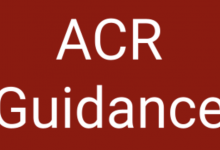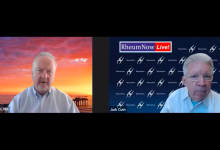It's Rheumatoid Arthritis, not the TNF inhibitor, that Drives Lymphoma Risk Save

Evidence from multiple studies suggests there is an increased risk of lymphoma in rheumatoid arthritis (RA) that is believed to be linked to the cumulative activity of the disease.
It is also debated whether biologic and non-biologic treatments increase this risk. Rheumatoid arthritis (RA) patients showed to have higher incidence of diffuse large B –cell lymphoma (DLBCL) unrelated to biologic therapy. There is very little data on lymphoma risk in non-TNF biologic treatment groups.
Possible association between use of methotrexate and EBV-positive lymphoproliferative disorders was reported; as well as increased risk of lymphoma in TNF-treated Crohns’ patients was reported prior.
A collaborative analysis of twelve European biologic registers from nine countries aimed to study if there might be a switch in the subtype distribution of lymphomas in RA linked to specific antirheumatic treatments.
Among close to 125,000 registry patients, 533 developed lymphomas. Multiple steps were taken to analyze the spectrum of lymphoma subtypes.
No significant differences in the distribution of Hodgkins lymphoma (HL) versus B-NHL versus T-NHL between patients who were either bionaïve or TNFi-treated..
After standardizing by age, the distribution of HL versus B-NHL versus T-NHL observed in the RA group was comparable to that seen in the general population.
Within the B-NHL subtype, however, DLBCL was significantly higher in RA compared with the general population (56% of all B-NHL in RA vs 30% in the general population); whereas CLL was significantly less frequent (16% of all B-NHL in RA vs 38% in the general population).
Only six, six and three lymphomas occurred in patients treated with rituximab, tocilizumab and abatacept, respectively, at lymphoma diagnosis. As a result, authors were not able to analyze data in non-TNF group due to small sample size.
It has been pointed out that the comparison between the treatment groups might be affected by age difference, since the age is an important factor in lymphogenesys.
Authors could not analyze any potential influence of additional therapies with MTX or other conventional synthetic DMARDs.
In general, the analysis supported the conclusion that the risk of lymphoma in RA is more dependent on RA itself and especially the disease activity than on the RA treatment; the spectrum of lymphoma subtypes seems not to be altered by TNFi.










If you are a health practitioner, you may Login/Register to comment.
Due to the nature of these comment forums, only health practitioners are allowed to comment at this time.